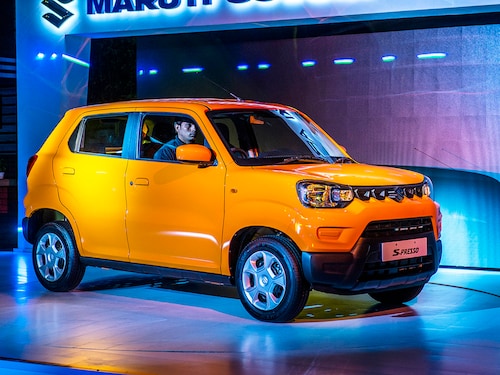The slow death of small cars
Regulations and affordability have come in the way of what was once the entry-point for the first-time car buyer


Once upon a time, small cars were the flavour of the country. It started with the iconic Maruti Suzuki 800, labelled the common man’s car, at a time when carmakers were scarce. Then, as India’s economy boomed on the back of a new economic regime, new automakers began to bet big on the small car—a hatchback that was often affordable and gave good fuel economy. Among others, the Hyundai Santro, Tata Indica and Maruti Suzuki Alto were blockbuster hits.
But that seems to be changing. According to the Society of Indian Automobile Manufacturers (SIAM), domestic sales in the mini segment (cars up to 3.6-metres in length) fell from 460,772 in FY19 to 152,262 in FY24 and 133,397 in FY25, a drop of over 70 percent in the last six years.
The situation isn’t any better in the compact segment, usually between 3.6 metres and 4.6 metres in length, with total sales having fallen from 13,82,471 in 2023 to 11,46,070 in 2025, a 17 percent decline in just two years. This May, the sales of Maruti Suzuki’s Alto and S-Presso declined to 6,776 units compared to 9,902 units in the year-ago period.
“What is happening is that people can’t afford small cars. Smaller and cheaper cars have become unaffordable because of the high cost of implementing regulatory measures," RC Bhargava, the chairman of Maruti Suzuki, said during the company’s earnings call in June. The ex-showroom price in New Delhi of a new Maruti Alto K10, for instance, increased from Rs3.4 lakh in 2019 to Rs4.23 lakh in 2025, a 25 percent jump.
As a result, some of the iconic cars that were bestsellers in the entry-level category, like the Alto, do not find a position among the most-sold vehicles in the country.
“At one point you had everyone from General Motors to Renault and Hyundai chasing after the small car market," says Arun Malhotra, the former managing director of Nissan Motors India. “Today, nobody wants to engage in the segment. You do not see a vehicle, which was consistently the largest selling car from the largest manufacturer in the country for 20 years, in the top 25 vehicles being sold today."
There is also an opportunity to emulate what Japan had done in the early 1950s to help first-time buyers enter the market and shun two-wheelers. “In the 1950s, Japan had almost a similar situation in relation to two-wheeler use. Large numbers of people in small towns were using two-wheelers," Bhargava told Forbes India recently. “At that time, Japan considered cars to be a luxury or sin industry. Then it decided they were not and introduced the concept of the Kei car—small cars with limited space. They lowered the tax on that car. The safety requirements were not the same for them as for the bigger cars."
Maruti Suzuki, currently the largest player in the small car segment, has already sought government help while enforcing new vehicular emissions norms. India is expected to launch the third edition of the Corporate Average Fuel Efficiency (CAFà‰) norms from April 2027, seeking to improve vehicle mileage and curb carbon emission. In 2024, all automakers had agreed to a single target of 91.7 gm CO2/km for passenger vehicles under the CAFà‰ 3 norms.
Maruti Suzuki is now seeking separate norms for vehicles under 1,000 kg and one for those above, which other automakers have rejected. The new norms are expected to further increase cost of vehicles. All that means, for now, is that the market seems to be moving away from small cars. Can it make a comeback? It’s a tough one to answer.
First Published: Jul 09, 2025, 16:07
Subscribe Now